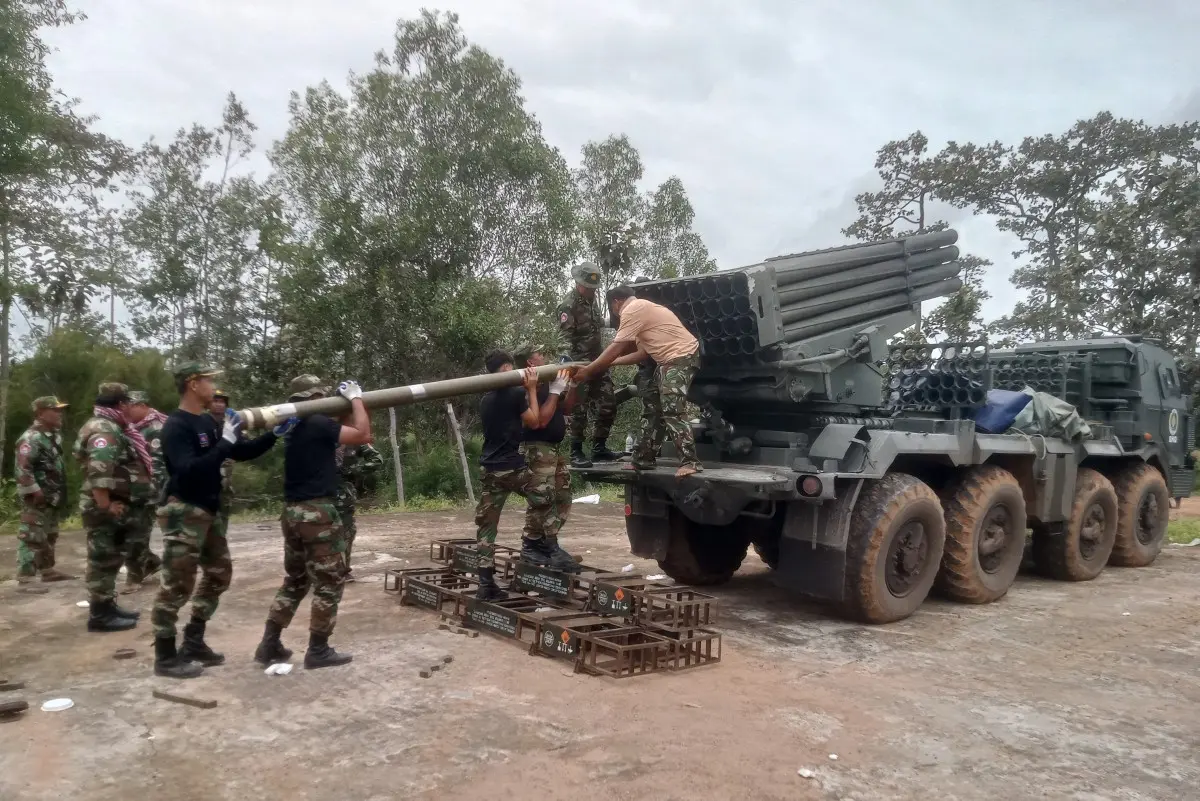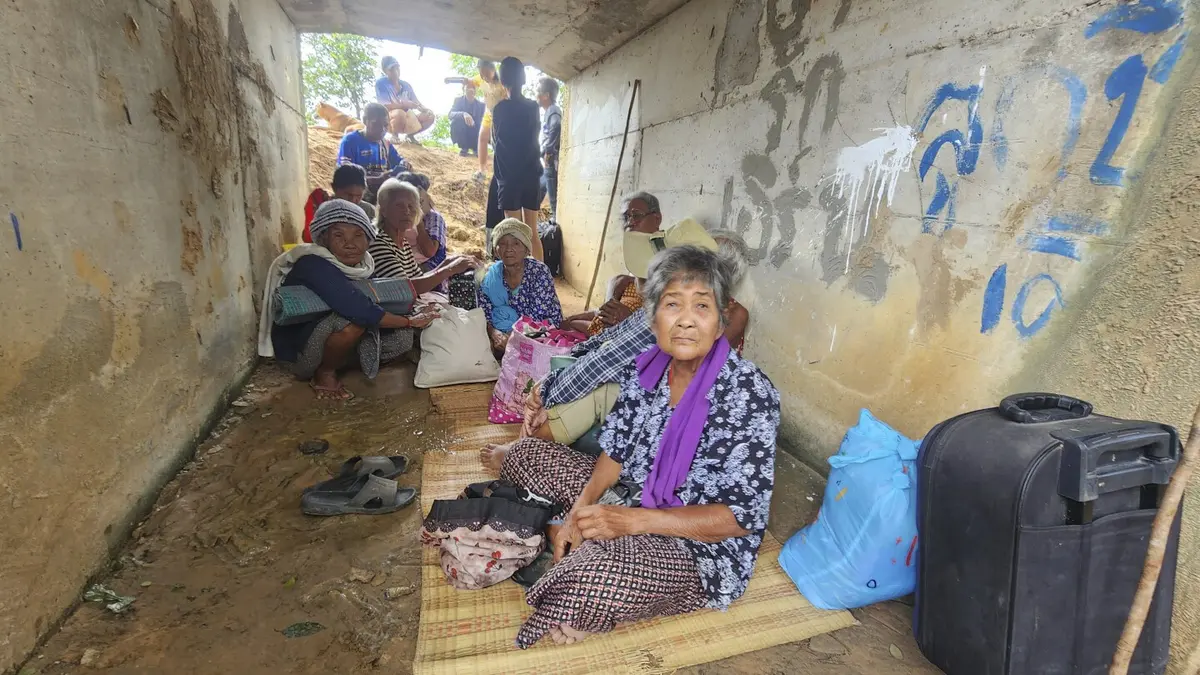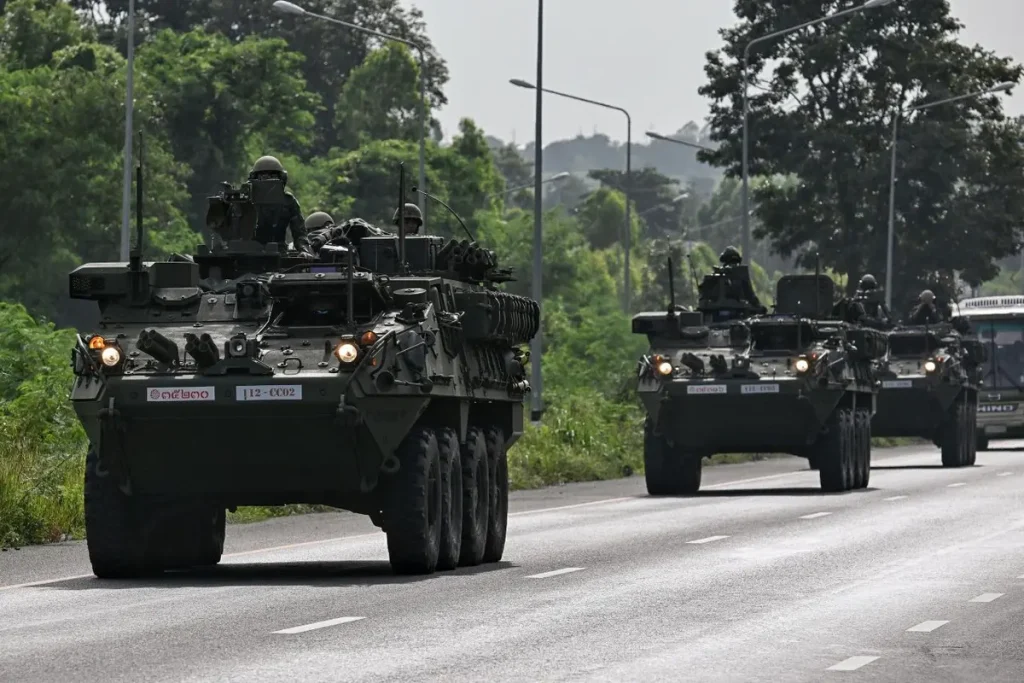Long‑running tensions between Thailand and Cambodia erupted into open warfare on July 24, as armed forces exchanged fire in multiple disputed border zones. The confrontation marks a dramatic spike in the Thailand–Cambodia border war, involving air strikes, artillery shelling, landmines, and mounting civilian casualties.
Thailand and Cambodia Armed Clashes at Temple Frontiers
Early Thursday, Thai and Cambodian troops clashed near Prasat Ta Muen Thom, located in Thailand’s Surin Province, triggering at least nine civilian deaths and dozens of injuries, according to AP News. Rocket and artillery fire struck Thai villages, including a hospital, prompting an urgent military response.

In retaliation, Thailand deployed six F‑16 fighter jets with at least one jet targeting Cambodian military infrastructure, a rare escalation described by Thai military officials as a necessary defense of sovereignty.
Both governments have accused the other of firing the first shot. Thailand claims Cambodian troops used a surveillance drone and rocket launchers near Ta Muen Thom, injuring two Thai soldiers. Cambodia insists Thai troops crossed into Cambodian territory and that its forces acted in self‑defense.
Tensions reached a breaking point following landmine incidents that wounded multiple Thai soldiers—one losing a leg—on July 23 in Ubon Ratchathani’s Nam Yuen district. Thailand alleges Cambodia recently laid Russian-manufactured PMN‑2 anti‑personnel mines, violating the Ottawa Treaty. Cambodia counters that the mines are remnants from past conflicts and rejects Thai claims as unfounded.

Up to 40,000 civilians in 86 villages near the border zones have been evacuated to safer areas as the fighting intensified, Thai officials report. In response to the crisis, Thailand shuttered all land border crossings with Cambodia, permitting only essential travel—for students, medical cases, and vital goods—while banning tourists and regular commerce crossings. Cambodia reciprocated with bans on Thai imports and media content, deepening the diplomatic rupture.
On July 23, Thailand recalled its ambassador and expelled Cambodia’s envoy in a reciprocal diplomatic escalation after the mine injuries . Prime Minister Phumtham Wechayachai, serving as acting premier, emphasized that fighting must cease before any negotiation, and reaffirmed the lack of any formal declaration of war.
Meanwhile, Thailand’s suspended Prime Minister Paetongtarn Shinawatra is under investigation after a controversial leaked phone call in which she addressed former Cambodian leader Hun Sen as “uncle,” triggering domestic outrage over perceived compromised sovereignty.
Thailand–Cambodia Conflict Explained
The conflict emanates from a century‑old territorial dispute over undemarcated areas along an 817 km border, originally mapped by France in 1907. Sites such as Preah Vihear and the Emerald Triangle have been flashpoints in the past, including deadly clashes in 2011 and again this year when a Cambodian soldier was killed in late May near Chang Bok, igniting the current military escalation.
While Cambodia has sought UN and ICJ arbitration, Thailand rejects the court’s jurisdiction and emphasizes bilateral mechanisms.
Thailand and Cambodia’s escalating conflict has drawn concern from ASEAN, China, and the UN, each urging immediate de-escalation to prevent wider regional destabilization and to safeguard thousands of civilians at risk.
Analysts warn the border war could intensify if nationalist rhetoric and sustained military action continue. With diplomatic ties severed and both sides reinforcing troops, further airstrikes, artillery duels, and mine-related incidents remain possible. International arbitration and ASEAN mediation may prove pivotal in resolving the crisis—or averting a wider armed confrontation


